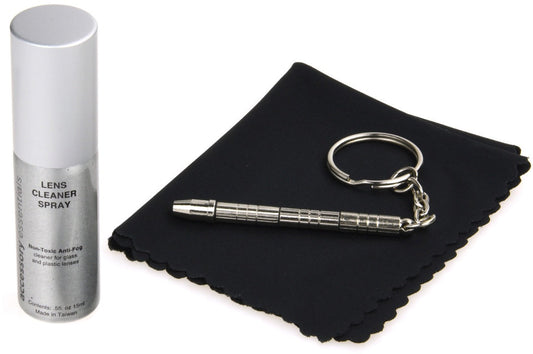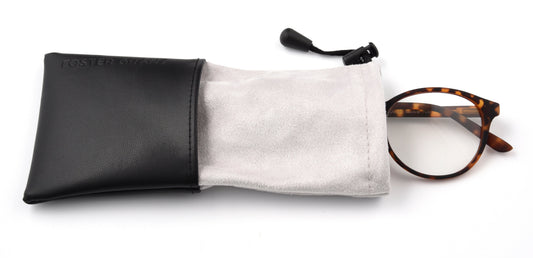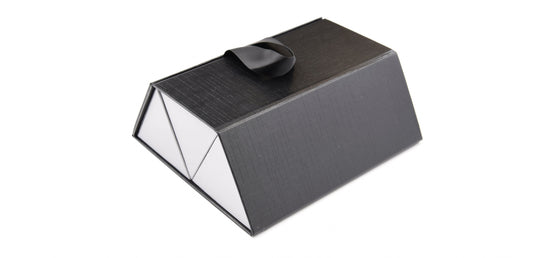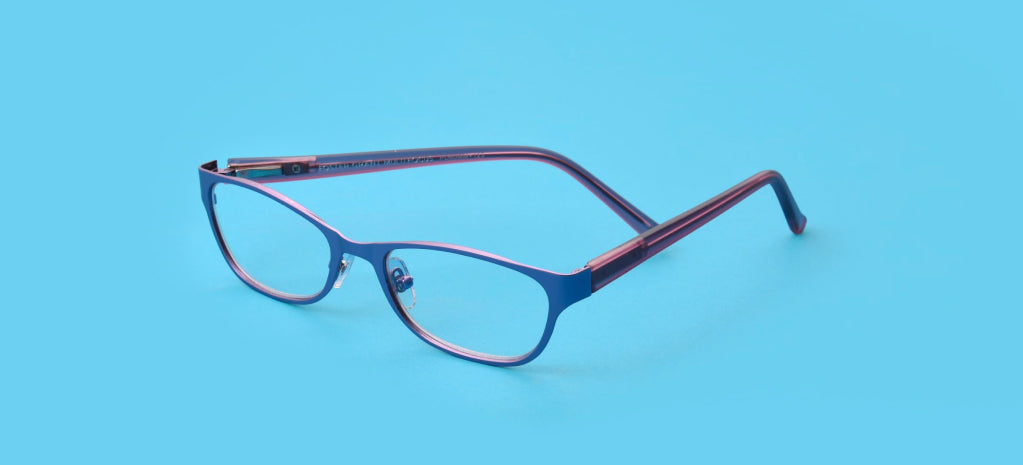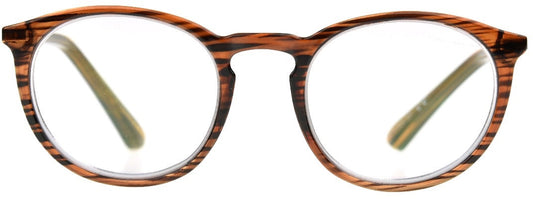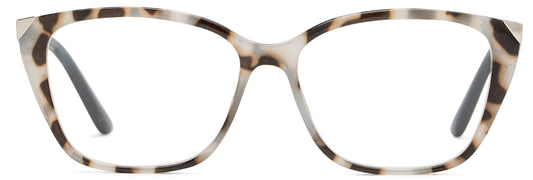Gray/Smoke
Gray is the most popular color for sunglasses lenses because it:
- Provides true color accuracy
- Is good for everyday use
- Transmits colors evenly
- Reduces glare
Brown/Amber
Many people choose a brown lens tint because it:
- Improves contrast
- Enhances depth perception
- Works well in variable light conditions
Green
Is green your color? It could be if you’re looking for good everyday protection and the following features. Green-tinted sun lenses:
- Reduce glare while brightening shaded areas
- Provide good contrast even in low-light conditions
Yellow
You may not have considered yellow lenses before. They:
- Are good in low-light conditions
- Improve visibility in foggy or hazy conditions
- Polarized
You can choose polarized lenses for SunReaders reading sunglasses and non-magnified sunglasses. Polarized lenses have a special coating that filters intense glare from the sun. They’re especially helpful in bright conditions when the sun reflects off surfaces like water, snow, or cement and creates a harsh glare.
Polarized lenses can make it hard to see certain liquid crystal display (LCD) screens, such as on ATMs, smartphones, and car dashboards. These screens are sometimes already polarized and may appear dark if you look at them while wearing glasses with polarized lenses.
We now have a solution to this problem — lenses made with Polarized for Digital technology. These lenses feature reduced lens polarization, which still reduces glare while making it easier to see your cell phone, e-reader, and other digital screens in outdoor environments. Polarized for Digital lenses are available in several of our sunglass options.
Lens Type
Our reading glasses are available in many options, so you can find the right pair for your personal style and vision needs.
Full Magnification/Fully Magnified
Lenses with full magnification have the selected magnification throughout the entire lens. You may want to choose this lens type if you only wear your reading glasses while doing close-up tasks.
Bifocal Style
If you only need glasses to see up close and don’t want to put on and take off your glasses all the time, you may want to tryreading bifocals. The top part of the lens is unmagnified so you can still as you normally do at a distance while the reading power is in the bottom portion.
Multi Focus
In our Multi Focus reading glasses, the bottom third has the highest strength (and the power you choose) for reading. The middle third has an intermediate strength (such as for computer use). The top third has about half the strength of the bottom, for clarity when interacting with someone nearby (sitting across a desk, for example).
The innovative Multi Focus™ lens technology means you don't have to take your readers off and put them back on to see things clearly at various distances.
Power
Reading glasses are available in different strengths, also called “diopter” (D) or “reading power.” The strength is written with a plus sign followed by a number, such as +1.25 D. Most over-the-counter reading glasses start at +1.00 D (as the lowest reading strength) and increase in +0.25 increments. Most of our readers go up to +3.25 D, while select lenses are available at +3.50 D.
The strength of lens magnification ranges and should be selected based on the amount of near-vision correction you need. Our strength guide may help you determine what power reading glasses are right for you. However, the best way to determine the strength you need is to visit your eye doctor for an eye exam.
Unmagnified
In addition to our wide variety of reading glasses, we also offer various types of glasses and sunglasses without magnification, including:
- Blue Light Glasses – We offer blue light filtering glasses and sunglasses with no magnification. The patented lens technology filters at least 30% of blue-violet light** while still providing 100% UVA-UVB lens protection.
- Traditional sunglasses – Our diverse range of traditional sunglasses combines classic designs with modern lens technology, providing stylish eye protection for your outdoor needs.
- Solar Shield Fits Over and ClipOns sunglasses – Fits Over sunglasses are made to wear over your eyeglasses or readers. ClipOns easily attach to your prescription eyeglasses or readers for added convenience. Solar Shield® sunglasses offer polarization and 100% UVA-UVB lens protection.
- Driving and night driving glasses – Driving glasses are designed to enhance visibility, improve contrast, and provide a more comfortable visual experience in certain driving conditions.
Lens Features
We offer lenses that do much more than protect your eyes and help you see clearly. Some of these additional lens options include:
- 100% UVA/UVB lens protection – This is the maximum UV protection you can get in a pair of sunglasses.
- Anti-fog coating – Anti-fog technology helps prevent condensation from accumulating on the lenses to keep them from fogging up.
- Anti-reflective (AR) coating – AR coating increases clarity by reducing reflections.
- Blue light filtering – This lens technology helps reduce at least 30% of blue-violet light transmission in the 400-455 nanometer range.**
- Computer lenses – A pair of anti-reflective blue light glasses can help keep your eyes comfortable and improve your visual experience by reducing reflections when using your computer.
- Driving and night driving lenses – Offering improved contrast for enhanced visual comfort, the back of these scratch- and impact-resistant lenses are treated with anti-reflective coating to help prevent light from bouncing back into the eye.
- Gaming lenses – Eye Gear® gaming glasses help filter at least 76% of blue-violet light.* These yellow-tinted lenses also improve contrast when using gaming consoles.
- Oleophobic lenses – These lenses have an oleophobic coating that is designed to repel oil (such as from your fingers). Our premium anti-reflective lenses also have an oleophobic coating.
- Polarized lenses – Polarized lenses have a specialized filter that reduces glare from reflective surfaces.
- Polycarbonate lenses – Also referred to as impact-resistant lenses, polycarbonate lenses are lightweight and shatter-resistant, making them sturdier than traditional plastic lenses.
- Scratch-resistant lenses – Many of our glasses and sunglasses feature a coating that creates a harder surface on the lens, making them more durable and resistant to scratches.
Frame Features
Your glasses should always fit comfortably. You can choose from numerous frame features to help ensure you find the right fit for your needs:
- Nose pads – Nose pads are small cushions that help your glasses sit comfortably on your nose.
- Adjustable nose pads – Our adjustable nose pads provide a comfortable fit for all-day wear.
- BendToFit® temples – These are temples (arms) that let you adjust the temple tips (ends of the arms that wrap around the ears) for a customized fit.
- Flex temple – These temples are made of flexible materials, offering comfort and durability.
- Folding frame – Our folding Micro-Readers fold perfectly into their own compact case and are ideal for everyday use.
- Spring hinges – Typically located at the temples, spring hinges allow eyeglass frames to adapt to various face shapes and help ensure a more comfortable fit.
- Lighted frame – Lighted frame glasses feature one LED light on each temple that is individually activated with a switch on the inner temple. The batteries for these lights last an average of 50 hours.
The best way to protect your reading glasses is to keep them in a case when you’re not wearing them. Most of our reading glasses come with a protective case.
If you need reading glasses, sunglasses, or SunReaders reading sunglasses, take some time to get to know Foster Grant. With our wide variety of options, we’re confident you’ll find your perfect pair.
*Blue-violet light is between 400 and 455nm as stated by ISO TR 20772:2018. (ISO: International Standards Organization – “Ophthalmic optics – Spectacles lenses – Short Wavelength visible solar radiation and the eye, FD ISO/TR 20772”)
**The percentage refers to the average percentage of blue-violet light (between 400 and 455 nm as stated by ISO TR 20772:2018) as measured in 5 nm increments. Covered under U.S. Pat. No. 8,360,574. Other U.S. and foreign patents pending.
SOURCES:
- What are polarized sunglasses? All About Vision. January 2021.
- Polycarbonate vs. Trivex eyeglass lenses. All About Vision. February 2019.**
- 4 common lens coatings for glasses. All About Vision. February 2019.**
**Like Foster Grant, All About Vision and AAV Media, LLC are affiliates of EssilorLuxottica.


